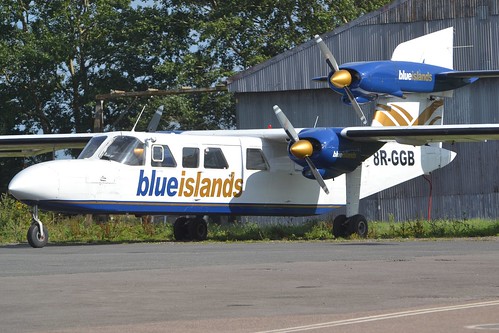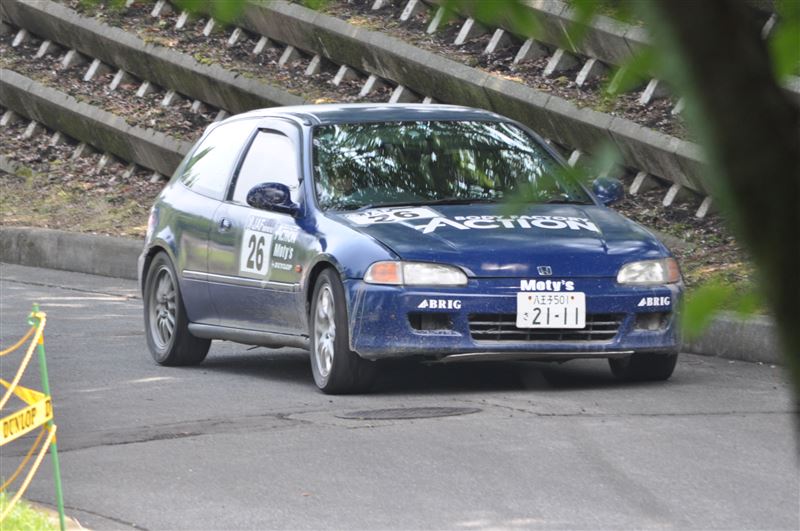I dont know who holds the copyright to this piece about the Islander/Trislander, only having flown on one as pax a couple of times, I find it spot on:
By a well-known Flight magazine.
Undaunted by technical realities, the design team at Pilatus Britten - Norman has announced plans for the BN2-XL, promising more noise, reduced payload, a lower cruise speed, and increased pilot workload.
We spoke to Mr. Fred Gribble, former British Rail boilermaker, and now Chief Project Engineer. Fred was responsible for developing many original and creative design flaws in the service of his former employer, and will be incorporating these in the new BN2-XL technology under a licensing agreement. Fred reassured BN-2 pilots, however, that all fundamental design flaws of the original model had been retained. Further good news is that the XL version is available as a retrofit.
Among the new measures is that of locking the ailerons in the central position, following airborne and simulator tests which showed that whilst pilots of average strength were able to achieve up to 30 degrees of control wheel deflection, this produced no appreciable variation in the net flight of the aircraft. Thus the removal of costly and unnecessary linkages has been possible, and the rudder has been nominated as the primary directional control. In keeping with this new philosophy, but to retain commonality for crews transitioning to the XL, additional resistance to foot pressure has been built in to the rudder pedals to prevent over-controlling in gusty conditions (defined as those in which wind velocity exceeds 3 knots).
An outstanding feature of Islander technology has always been the adaptation of the O-540 engine which, when mounted in any other aircraft in the free world (except the Trislander) is known for its low vibration levels. The Islander adaptations cause it to shake and batter the airframe, gradually crystallise the main spar, desynchronise the accompanying engine, and simulate the sound of fifty skeletons fornicating in an aluminium dustbin. PBN will not disclose the technology they applied in preserving this effect in the XL but Mr. Gribble assures us it will be perpetrated in later models and sees it as a strong selling point. "After all, the Concorde makes a lot of noise" he said, "and look how fast that goes."
However design documents clandestinely recovered from the PBN shredder have solved a question that has puzzled aerodynamicists and pilots for many years, disclosing that it is actually noise which causes the BN2 to fly. The vibration set up by the engines, and amplified by the airframe, in turn causes the air molecules above the wing to oscillate at atomic frequency, reducing their density and creating lift. This can be demonstrated by sudden closure of the throttles, which causes the aircraft to fall from the sky. As a result, lift is proportional to noise, rather than speed, explaining amongst other things the aircraft's remarkable takeoff performance.
In the driver's cab (as Gribble describes it) ergonomic measures will ensure that long-term PBN pilots' deafness does not cause in-flight dozing. Orthopaedic surgeons have designed a cockpit layout and seat to maximise backache, en-route insomnia, chronic irritability, and terminal (post-flight) lethargy. Redesigned "bullworker" elastic aileron cables, now disconnected from the control surfaces, increase pilot workload and fitness. Special noise retention cabin lining is an innovation on the XL, and it is hoped in later models to develop cabin noise to a level which will enable pilots to relate ear-pain directly to engine power, eliminating the need for engine instruments altogether.
We were offered an opportunity to fly the XL at Britten-Norman's development facility, adjacent to the British Rail tearooms at Little Chortling. (The flight was originally to have been conducted at the Pilatus plant but aircraft of BN design are now prohibited from operating in Swiss airspace during avalanche season). For our mission profile, the XL was loaded with coal for a standard 100 N.M. trip with British Rail reserves, carrying one pilot and nine passengers to maximise discomfort. Passenger loading is unchanged, the normal under-wing protrusions inflicting serious lacerations on 71% of boarding passengers, and there was the usual confusion in selecting a door appropriate to the allocated seat. The facility for the clothing of embarking passengers to remove oil slicks from engine cowls during loading has been thoughtfully retained.
Start-up is standard, and taxiing, as in the BN2 is accomplished by brute force. Takeoff calculations called for a 250-decibel power setting, and the rotation force for the (neutral) C of G was calculated at 180 ft/lbs. of backpressure.
Initial warning of an engine failure during takeoff is provided by a reduction in vibration of the flight instrument panel. Complete seizure of one engine is indicated by the momentary illusion that the engines have suddenly and inexplicably become synchronised. Otherwise, identification of the failed engine is achieved by comparing the vibration levels of the windows on either side of the cabin. (Relative passenger pallor has been found to be an unreliable guide on many BN2 routes because of ethnic consideration).
Shortly after takeoff the XL's chief test pilot, Capt. Mike "Muscles" Mulligan demonstrated the extent to which modern aeronautical design has left the BN2 untouched; he simulated pilot incapacitation by slumping forward onto the control column, simultaneously applying full right rudder and bleeding from the ears. The XL, like its predecessor, demonstrated total control rigidity and continued undisturbed. Power was then reduced to 249 decibels for cruise, and we carried out some comparisons of actual flight performance with graph predictions. At 5000 ft and ISA, we achieved a vibration amplitude of 500 CPS and 240 decibels, for a fuel flow of 210 lb/hr, making the BN2-XL the most efficient converter of fuel to noise after the Titan rocket.
Exploring the Constant noise/Variable noise concepts, we found that in a VNE dive, vibration reached its design maximum at 1000 CPS, at which point the limiting factor is the emulsification of human tissue. The catatonic condition of long-term BN2 pilots is attributed to this syndrome, which commences in the cerebral cortex and spreads outwards. We asked Capt. Mulligan what he considered the outstanding features of the XL. He cupped his hand behind his ear and shouted "Whazzat?"
We returned to Britten-Norman convinced that the XL model retains the marque's most memorable features, whilst showing some significant and worthwhile regressions.
PBN are not, however, resting on their laurels. Plans are already advanced for the Trislander XL and noise tunnel testing has commenced. The basis of preliminary design and performance specifications is that lift increases as the square of the noise, and as the principle of acoustic lift is further developed, a later five-engined vertical take-off model is also a possibility."
All in all, a wonderful aeroplane.




 I bet in a major market an ad on Backpage would fill the plane a few times a day, you could even become "Airpimp".
I bet in a major market an ad on Backpage would fill the plane a few times a day, you could even become "Airpimp".